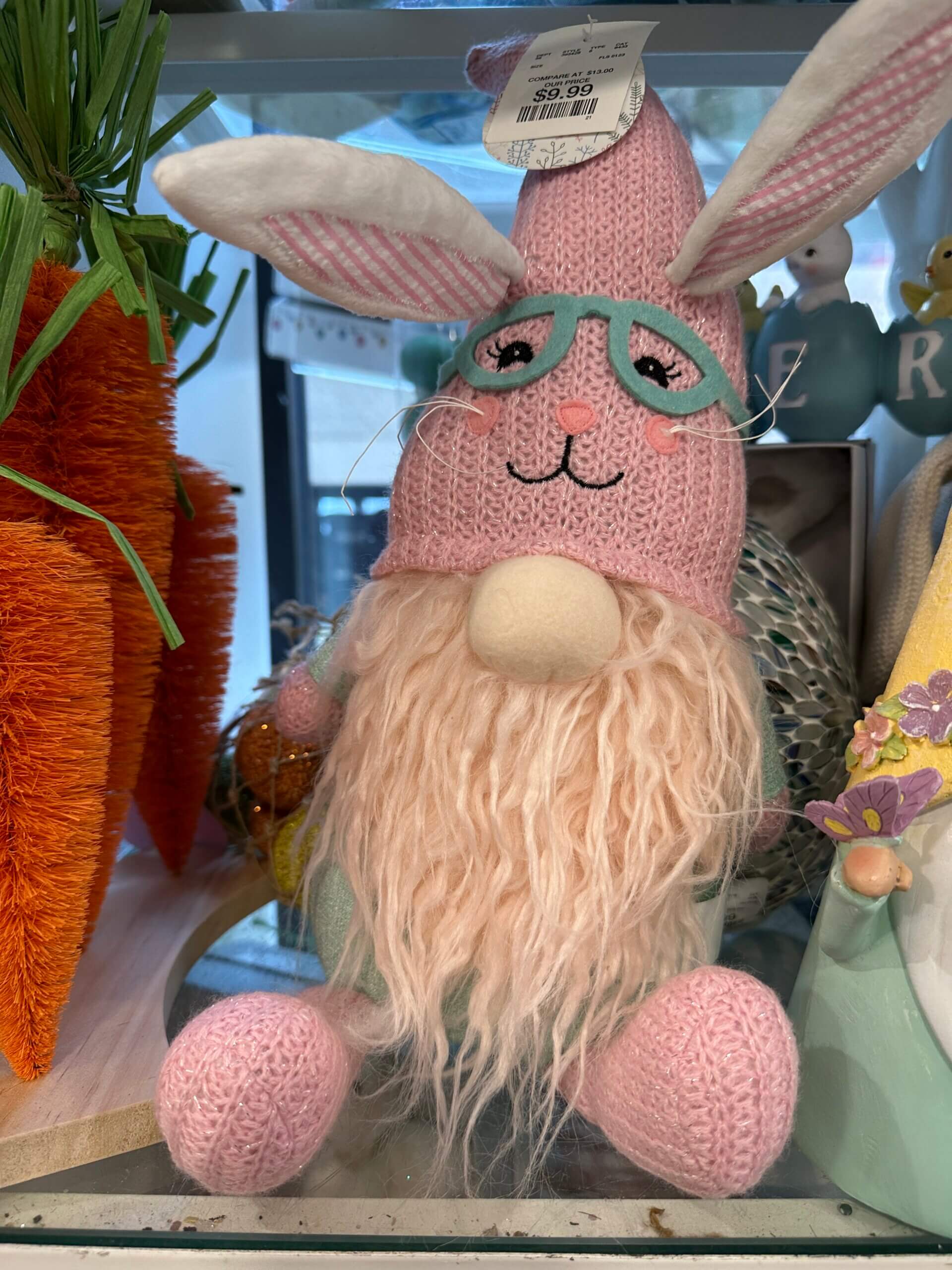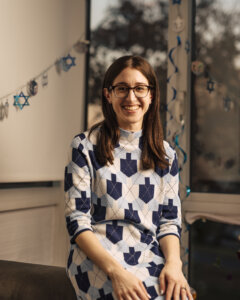Where are the Passover gnomes?
Some merchandise for one of the biggest Jewish holidays of the year would be better than, well, none

Graphic by Angelie Zaslavsky
Perusing the HomeGoods store the day after New Year’s, I noticed that love was already in the air. The gnomes had switched over (miraculously) from Hanukkah and Christmas-themed to Valentine’s Day (in at least 18 varieties). Soon, St. Patrick’s Day gnomes would appear, followed by an abundance of Easter gnomes.
But there are no gnomes for Passover. Now don’t misunderstand: I was an outspoken Hanukkah-gnome naysayer. These creatures have no connection to Judaism. Instead, they represent the pure commercialization of the Festival of Lights. Passover gnomes would be no better. However, I do think some commercial merchandise would be better than, well, none.
Many big chains proudly sold Hanukkah decorations this past season; several even invested in creating their own, in-house designs. But these same brands seem to be ignoring Passover (though some have limited selections online). Couldn’t the fluffy bunnies make room for a few frogs?
Compared to Hanukkah, Passover is a far more important holiday on the Jewish calendar. Passover is mentioned in the Torah; it’s one of three Jewish pilgrimage festivals when Jews in ancient times would ascend to the Temple in Jerusalem.
While Passover is reflected in most supermarket aisles with matzo, gefilte fish and sliced fruit jellies (often stocked year-round), there is not much in the way of Passover decor in retail stores that were flush with Hanukkah merchandise just a few months ago. According to a 2020 Pew Study, 62% of American Jews take part in a Passover Seder. Even Jews who are not particularly observant the rest of the year celebrate the holiday.

Passover has been publicly recognized in the United States much longer than Hanukkah. One of the earliest ads I found for Passover groceries was from an 1827 edition of the Charleston Daily Courier. The large Reform Jewish communities in the United States at that time took Passover seriously. Hanukkah-related ads, meanwhile, did not appear until the early 1900s.
In 1844, The Baltimore Sun reported that there were “six thousand loaves of passover bread [matza] which … will consume over one hundred and thirty barrels of flour.” The high number of flour barrels was the 1844 equivalent of a Pew study, suggesting that a large number of Jews kept Passover. Citing this number was also a way to report on the growing number of American Jewish consumers.
One could argue that Hanukkah products are sold in abundance because of the holiday’s proximity to Christmas. For Jewish children especially, celebrating Hanukkah is a way of providing equal time, and an excuse for lavish gift-giving.
Easter, albeit a more serious holiday than Christmas, has fared quite well in the retail sphere.

Easter bunnies and eggs are everywhere this time of year. Even Ramadan decorations are out there. But there is little trace of “Chag Kasher V’Sameach” (Happy Passover) garlands, plastic seder plates, or matzo-printed napkins. I’d even splurge on splitting-the-sea tablecloths or matzo coasters. Given Passover’s proximity to Easter, it’s surprising the Jewish holiday hasn’t caught up in the merchandise realm.
With antisemitism on the rise in America, there is something comforting about seeing Jewish holiday items openly displayed on store shelves. Given that Jews are a religious minority in the United States amounting to only 2% of the population, seeing holiday decorations for us connotes a deeper sense of belonging and acceptance within the wider society. More readily available Passover merch would also give the holiday a higher profile in the community at large.
I’ve surveyed several home-decor stores near where I live (in a heavily Jewish area). At one, the clerk explained she didn’t get in any Passover items this year and apologized. Not to worry, though: She had personally assembled a selection of blue and silver plates for the Passover meal. Nice, but not really appropriate.
Passover is a serious holiday, recalling our slavery in Egypt, but it is also a celebratory holiday commemorating our religious freedom. The Haggadah teaches “v’chol hamarbeh lesaper b’yetziat mitzrayim, harei zeh meshubach,” that “whoever expands upon retelling the story of the Exodus from Egypt, is all the more praiseworthy.” My hope is that more Passover decorations will contribute to broadening our creative retelling of the Passover story, making it more inclusive and fun.
At the end of the seder, we proclaim: “Next year, in Jerusalem!” This year, I’ll add: Next year, in Target!
To contact the author, email [email protected]
















